Nidhi
A Surrogate Model for the Forward Design of Multi-layered Metasurface-based Radar Absorbing Structures
May 14, 2025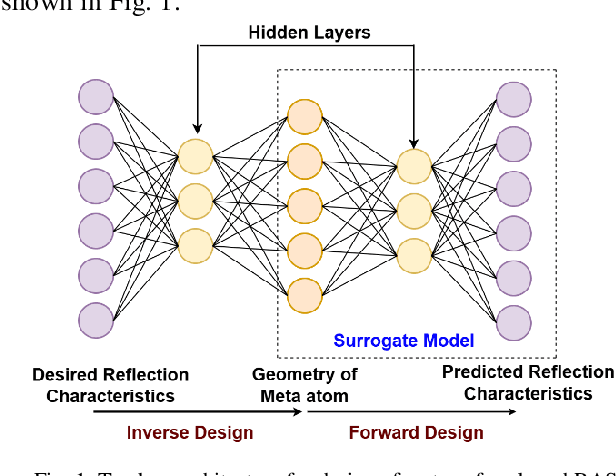
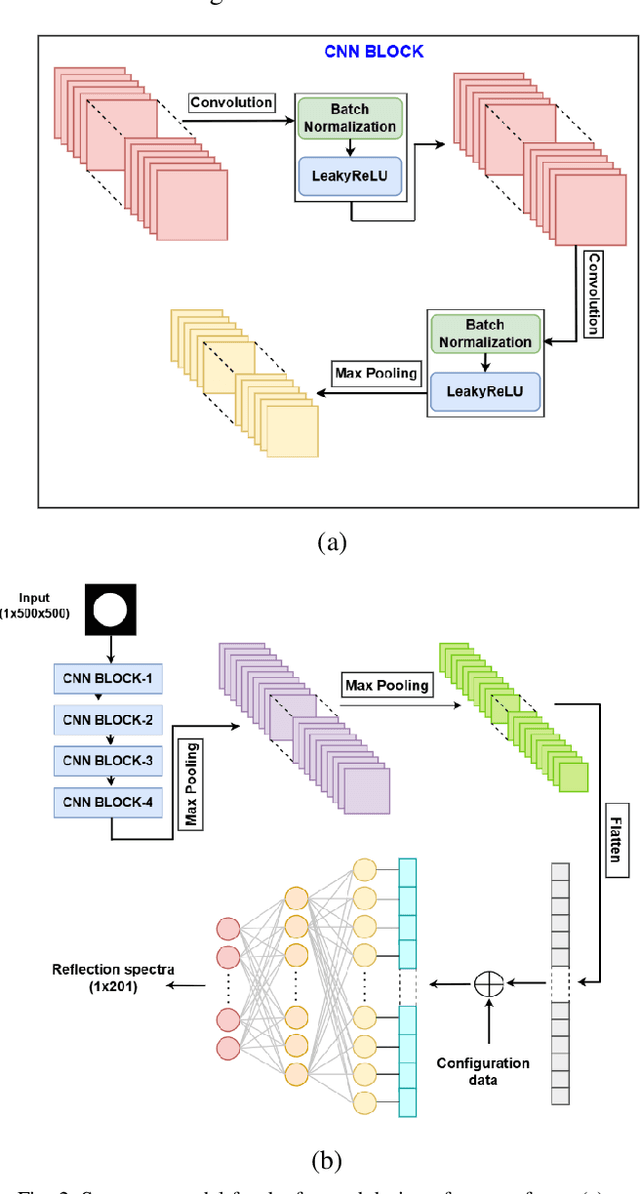
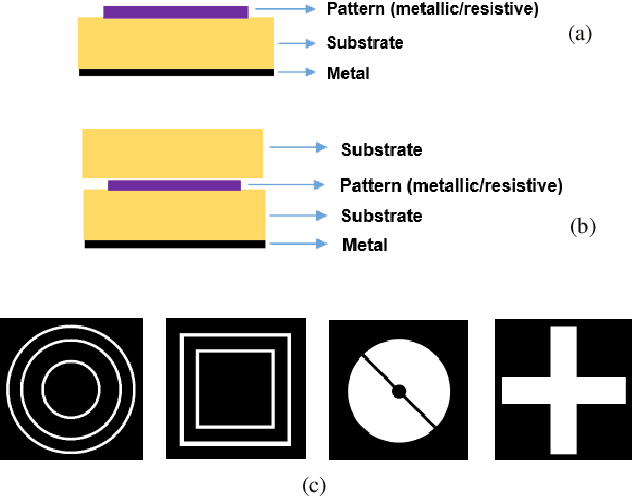
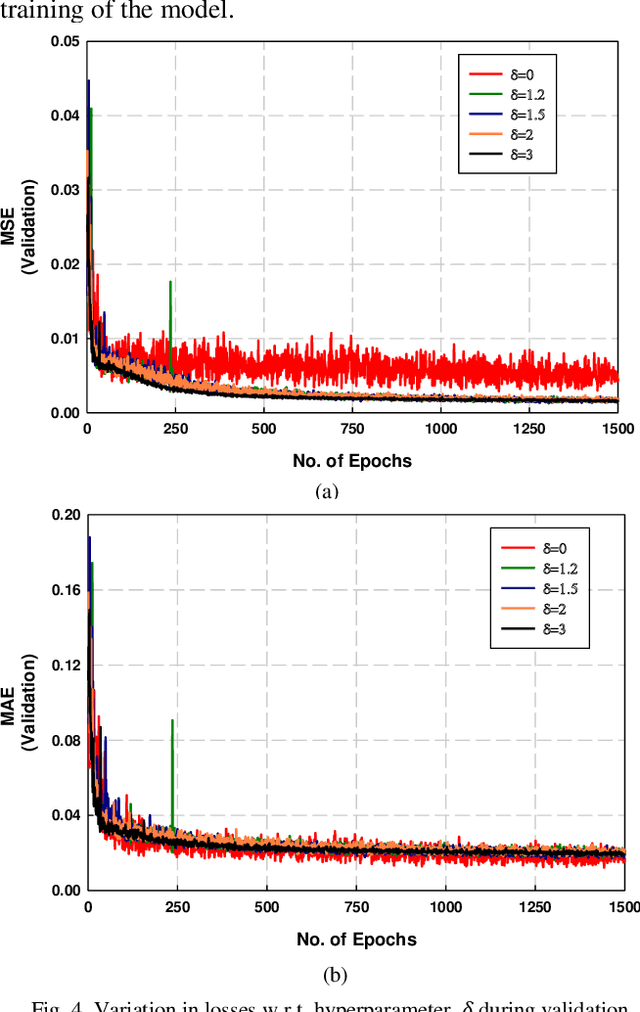
Abstract:Metasurface-based radar absorbing structures (RAS) are highly preferred for applications like stealth technology, electromagnetic (EM) shielding, etc. due to their capability to achieve frequency selective absorption characteristics with minimal thickness and reduced weight penalty. However, the conventional approach for the EM design and optimization of these structures relies on forward simulations, using full wave simulation tools, to predict the electromagnetic (EM) response of candidate meta atoms. This process is computationally intensive, extremely time consuming and requires exploration of large design spaces. To overcome this challenge, we propose a surrogate model that significantly accelerates the prediction of EM responses of multi-layered metasurface-based RAS. A convolutional neural network (CNN) based architecture with Huber loss function has been employed to estimate the reflection characteristics of the RAS model. The proposed model achieved a cosine similarity of 99.9% and a mean square error of 0.001 within 1000 epochs of training. The efficiency of the model has been established via full wave simulations as well as experiment where it demonstrated significant reduction in computational time while maintaining high predictive accuracy.
Hollywood Identity Bias Dataset: A Context Oriented Bias Analysis of Movie Dialogues
Jun 01, 2022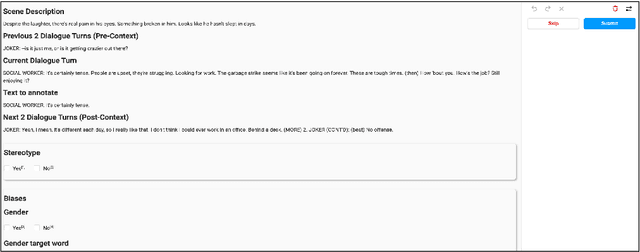



Abstract:Movies reflect society and also hold power to transform opinions. Social biases and stereotypes present in movies can cause extensive damage due to their reach. These biases are not always found to be the need of storyline but can creep in as the author's bias. Movie production houses would prefer to ascertain that the bias present in a script is the story's demand. Today, when deep learning models can give human-level accuracy in multiple tasks, having an AI solution to identify the biases present in the script at the writing stage can help them avoid the inconvenience of stalled release, lawsuits, etc. Since AI solutions are data intensive and there exists no domain specific data to address the problem of biases in scripts, we introduce a new dataset of movie scripts that are annotated for identity bias. The dataset contains dialogue turns annotated for (i) bias labels for seven categories, viz., gender, race/ethnicity, religion, age, occupation, LGBTQ, and other, which contains biases like body shaming, personality bias, etc. (ii) labels for sensitivity, stereotype, sentiment, emotion, emotion intensity, (iii) all labels annotated with context awareness, (iv) target groups and reason for bias labels and (v) expert-driven group-validation process for high quality annotations. We also report various baseline performances for bias identification and category detection on our dataset.
Combining exogenous and endogenous signals with a semi-supervised co-attention network for early detection of COVID-19 fake tweets
Apr 12, 2021
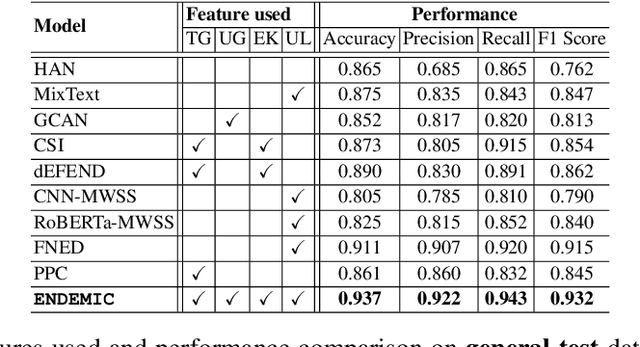

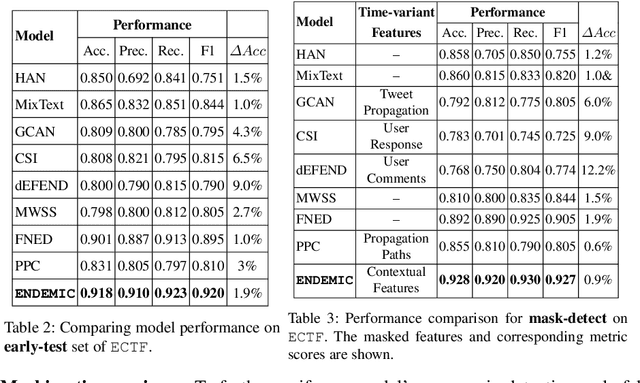
Abstract:Fake tweets are observed to be ever-increasing, demanding immediate countermeasures to combat their spread. During COVID-19, tweets with misinformation should be flagged and neutralized in their early stages to mitigate the damages. Most of the existing methods for early detection of fake news assume to have enough propagation information for large labeled tweets -- which may not be an ideal setting for cases like COVID-19 where both aspects are largely absent. In this work, we present ENDEMIC, a novel early detection model which leverages exogenous and endogenous signals related to tweets, while learning on limited labeled data. We first develop a novel dataset, called CTF for early COVID-19 Twitter fake news, with additional behavioral test sets to validate early detection. We build a heterogeneous graph with follower-followee, user-tweet, and tweet-retweet connections and train a graph embedding model to aggregate propagation information. Graph embeddings and contextual features constitute endogenous, while time-relative web-scraped information constitutes exogenous signals. ENDEMIC is trained in a semi-supervised fashion, overcoming the challenge of limited labeled data. We propose a co-attention mechanism to fuse signal representations optimally. Experimental results on ECTF, PolitiFact, and GossipCop show that ENDEMIC is highly reliable in detecting early fake tweets, outperforming nine state-of-the-art methods significantly.
 Add to Chrome
Add to Chrome Add to Firefox
Add to Firefox Add to Edge
Add to Edge